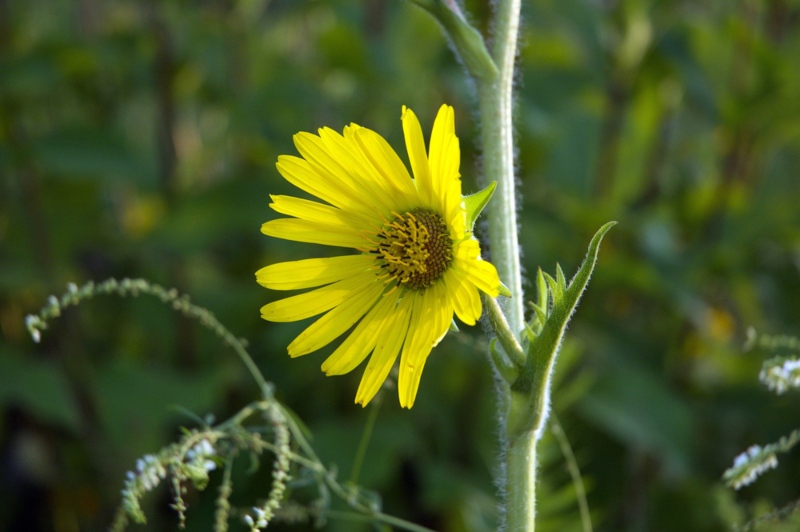The compass plant is a unique looking plant that can easily grow to be 9 to 12 feet in height. The flowers grow from a long, light green stalk in the center of the plant. These flowers are small in size, about 4 inches across, and they resemble a wild sunflower/daisy combination. These yellow flowers can be seen from June until August. They produce a sweet floral scent that will help bring bees and butterflies to your garden. Compass plant grows in hardiness zones three to nine.
Let’s take a more in-depth look at some of the care you will need to know about while growing compass plant.
Light and Temperature Requirements
The plant needs a good bit of light to thrive when it grows, so make sure that you consider that when you find a location to plant it. This plant does well with a lot of heat, so a dry climate will be ideal for its growth. An atmosphere that is too humid can cause powdery mildew to form on the leaves. Ideally, you will not want nighttime temperatures to drop below 50 degrees if the plant is growing outdoors.
Water Requirements
Compass plant is a hardy option that can easily be grown without a lot of need to water the plant. It is drought-tolerant, so unless you have not had rain for a very long time, your plant will most likely not need to be watered. A little bit of rain every other week will suffice to give the plant enough water to grow. If the plant becomes overly dry, it may be a good idea to provide it with a little water to perk it up.
Soil and Fertilizer Requirements
This plant is not particular about the type of soil that you plant it in, but I would suggest something that is loamy and drains well. Ideally, you will want to consider soil with an acidity level that is between 6.5 and 7.5.
When you plant the compass plant, remember that it has a taproot that often grows to be more than 10 feet in length. This means that you will need to make sure that the soil is deep enough to accommodate the plant. Since this is a wildflower, it does not require additional food or fertilizer to grow. With that being said, adding compost to the soil will help the plant thrive.
Growing from a Seed
When it comes to propagation, growing a new plant from a seed is the best way to go about getting a new plant. Since this is a wildflower, the seeds can be planted directly in the ground during the fall. They will germinate over the winter and grow in the spring of the following year.
Another method you can do is stratify the seed or place them close together in the soil to help them germinate during the spring of the year. Stratification should be done for 60 days at about 40 degrees Fahrenheit to promote the seeds’ initial growth. You should also scarify the seeds or knick them with a knife’s blade before planting them to encourage growth.
The seeds can be collected from existing plants, but they will need to be accessed from the hard fruit that the plant drops. Inside each one, there will be individual seeds that can be planted. Since the roots are so long, growing the plant indoors in a container is not possible. It will need to be planted in the ground, but once it takes root and begins to grow, this plant will live for 100 years or more.
Pest, Diseases, and Potential Problems
When it comes to pests, there are a few insects that will attempt to feed on this plant. The prairie cicada’s larvae enjoy feeding on the taproot of the plant, which I already stated is quite large. In addition, different varieties of beetles and other insects will like to feed on the stem and the leaves of the plant. These insects can be taken care of with a mild soapy solution or a mild pesticide to remove them from the plant.
There are also not many serious diseases that you will have to worry about. If the leaves get overly wet and humid while growing, powdery mildew could be an issue. This can be avoided entirely by planting the compass plant in a cool, dry place. Root rot could also be an issue if the soil stays wet for an extended period. Also, since the plant grows to be so tall, it often gets top-heavy in windy conditions, which can be damaging to the plant’s stems.




